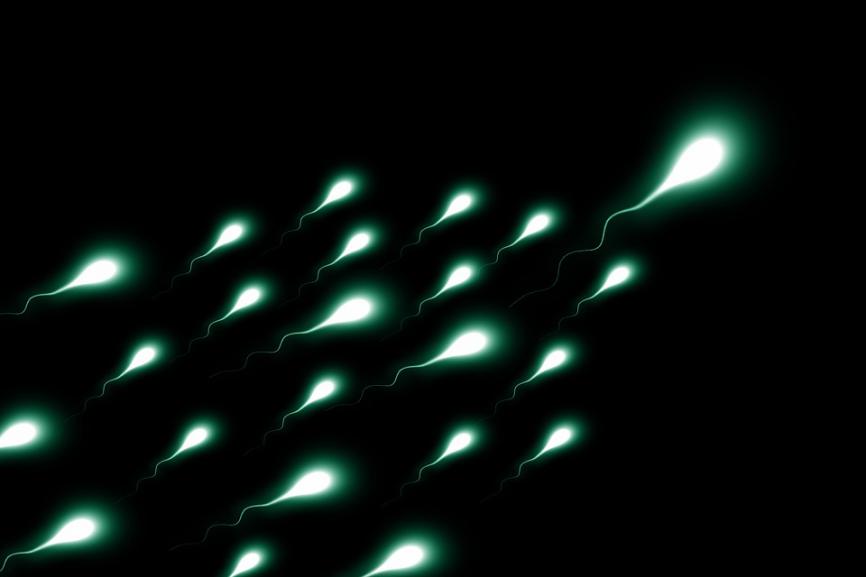Are Azoospermia Patients Infertile?
Date:2021-07-28 click:0
Azoospermia is a widespread andrological disease. If men suffer from this disease, they will feel very worried and anxious. There are many causes of azoospermia, which are generally caused by bad living habits and dietary rules. If some people develop diseases of the reproductive system, they may also induce azoospermia, so pay attention to them! Patients with azoospermia should be detected and treated early, so as to avoid the occurrence of permanent infertility. 
Can men still be fertile after suffering from azoospermia?
Two categories of azoospermia
1. Testicular spermatogenesis dysfunction, also called true azoospermia. There are many reasons for azoospermia, such as genetic diseases, autosomal or sex chromosome abnormalities that affect the production of sperm in the testes. Congenital testicular abnormalities, testicular disease, testicular trauma, inflammation, torsion, and testicular vascular disease may also affect it. Radiation damage and drugs, especially cytotoxic drugs and other factors can also be the causes. Damages to spermatogenic cells in the testis can affect sperm production and cause azoospermia.
2. Blocked vas deferens, also known as pseudo azoospermia. It accounts for about 40%-48% of azoospermia. The causes are congenital malformations, common epididymal head ectopic, epididymal tube atresia, missing or underdeveloped vas deferens; infections: such as gonococcus, tuberculosis and other bacterial infections, which can cause epididymis and vas deferens obstruction; epididymis where cysts compress the epididymal duct and cause obstruction; damage of the vas deferens and so on.
Azoospermia doesn’t mean the "death penalty for fertility"
Azoospermia should be differentiated from oligospermia and necrospermia. Oligospermia means that the number of sperm in semen is lower than the normal fertility, such as less than 20 million per milliliter is considered to be oligospermia. Necrospermia refers to those with more than 40% dead sperm found in semen examination, also known as dead sperm syndrome. Neither category can be diagnosed as azoospermia.
Although azoospermia is more complex and difficult to treat than other male infertility, it cannot be concluded as "reproductive death penalty" or "reproductive despair". Instead, the cause should be further investigated and targeted treatment methods should be found.
Treatment of azoospermia
For testicular spermatogenesis dysfunction, some of them are temporary damage to the testicles, such as viral orchitis caused by mumps, as well as gonorrhea, syphilis, testicular tuberculosis, etc., which impair the function of sperm production, and there will be no sperm. If the disease is detected and treated in a timely manner, the cause of the disease is eliminated, and there is hope for a cure.
If the testicles are traumatized or twisted, which leads to impaired sperm production, surgery or medication can also be taken in time. Diuretic and Anti-inflammatory Pill can treat fertility caused by sperm problems, and increase the possibility of fertility. Its ingredients are natural herbs, which can naturally increase the possibility of natural fertility.
For obstructive azoospermia, surgical treatment can be carried out according to different conditions, such as vasectomy, epididymal vasectomy, artificial semen indwelling, etc. For those blocked due to inflammation and edema of the vas deferens, antibiotics and corticosteroids can be used for treatment.
Due to cyst compression, the cyst can be removed surgically. For conditions such as congenital malformations or severe dysplasia, specific symptomatic methods can be used to treat them. For those who can find sperm by biopsy, most of them can be fertilized by second-generation IVF, that is, intra-follicular injection of single sperm.
For congenital anorchidism or testicular biopsy without sperm production, etc. There is currently no way to restore spermatogenic function. For example, there are only supporting cells and no spermatogenic cells in the testicular tissue, and it is impossible to produce sperm. This is the most serious type of azoospermia. There is a last resort for such patients, that is, artificial insemination of sperm using a sperm bank can also obtain offspring.
In summary, although azoospermia is more complicated and difficult to treat than other male infertility diseases, it does not means infertility. Patients should further investigate the cause of their illness and find targeted treatments.
Recommended Readings:



